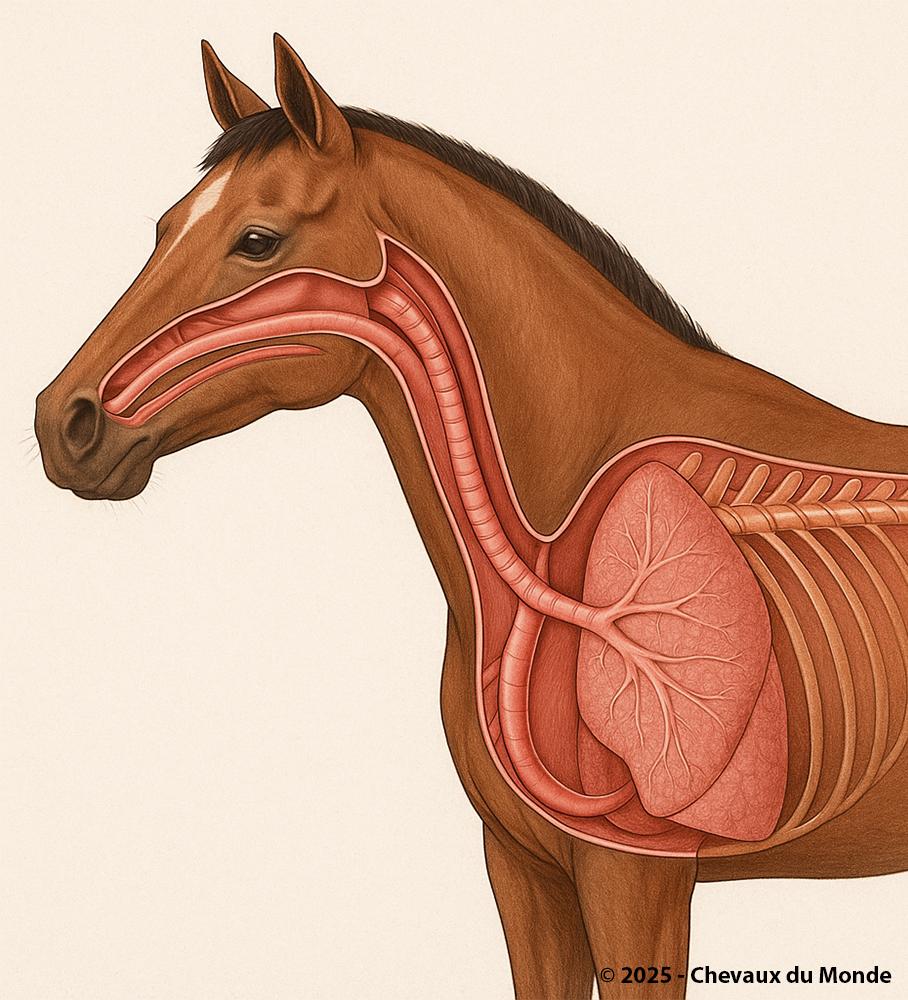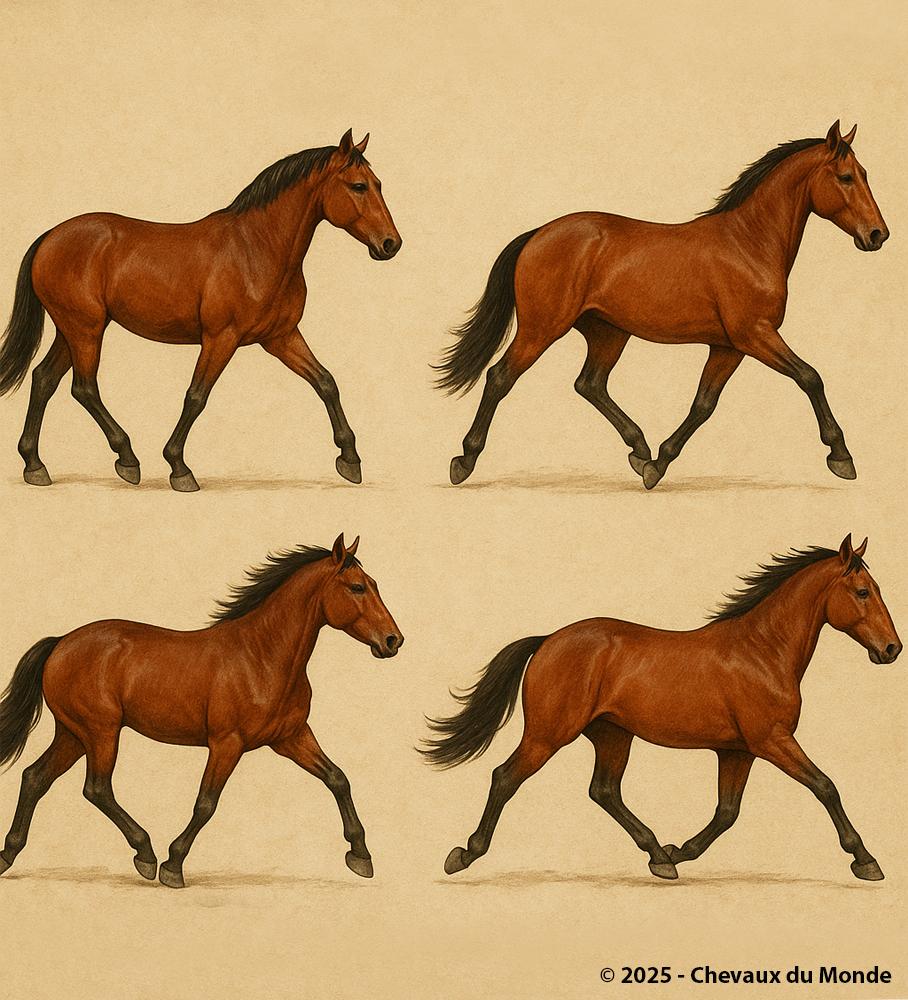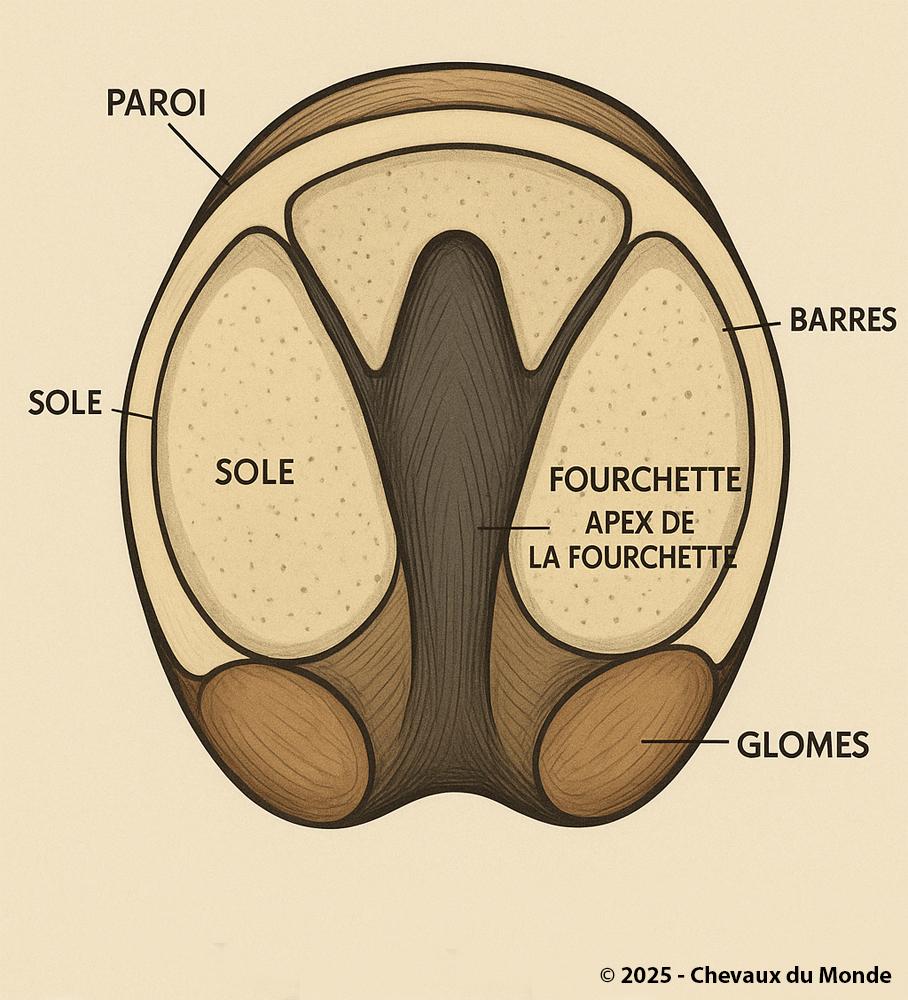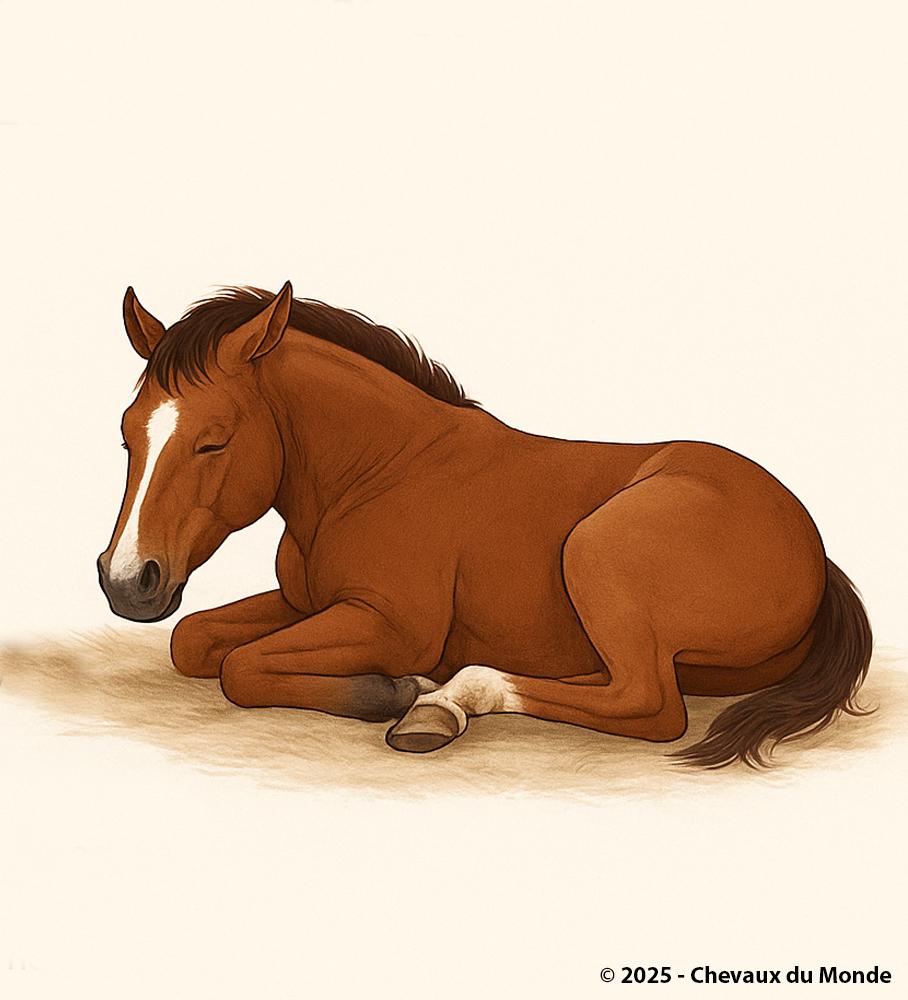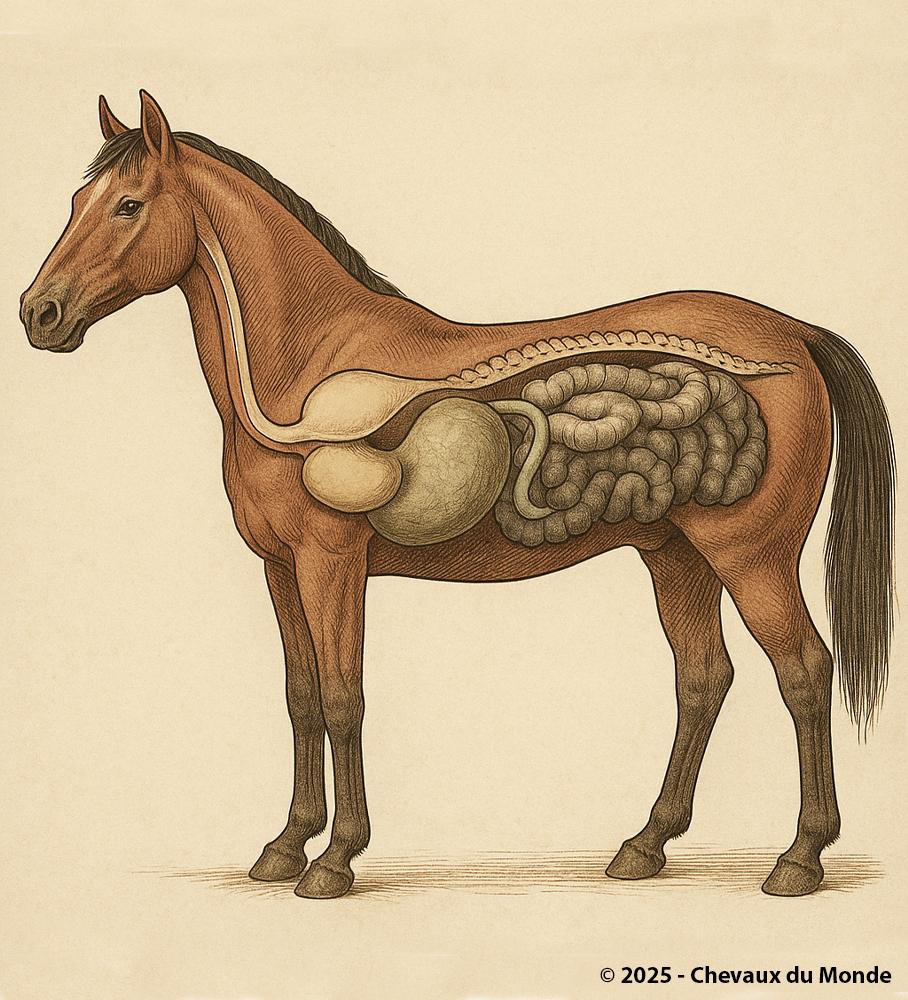FOAL GROWTH: KEY STAGES AND CARE TIPS
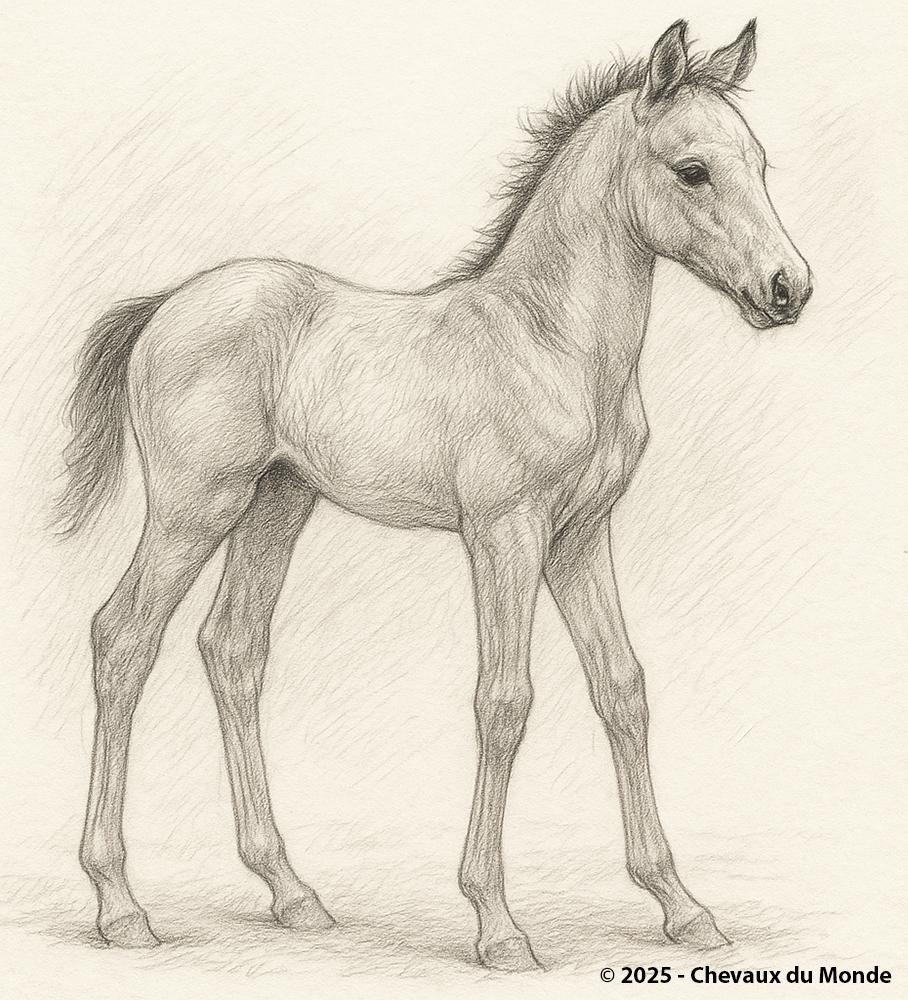
Foal growth: from birth to adulthood, a young horse goes through key developmental stages shaped by nutrition, movement, and social interactions.
The growth of a foal is a rapid and complex process, influenced by genetics, nutrition, environment, and the care provided. Understanding the different development stages helps optimize the foal’s health, muscular and skeletal development, and behavioral balance.
1. Birth to 1 month – The Neonatal Stage
Average birth weight: 8 to 12% of the adult weight (approx. 40–60 kg for a light horse, up to 70 kg for a draft foal).
Rapid growth: gain of 1 to 3 kg per day, depending on breed and mare’s condition.
Feeding: colostrum (first milk) is vital within the first 12 hours to ensure passive immunity.
Behavior: the foal stands up within the first hour and suckles frequently (20 to 25 times/day).
Essential care:
– Check the intake of colostrum
– Monitor and disinfect the umbilical cord
– First veterinary check-up within 24–48 hours
2. 1 to 6 months – Accelerated Growth and Weaning
Bone development: active formation of the skeleton; growth plates are very sensitive to deficiencies or overload.
Weight: by 6 months, the foal reaches about 40 to 50% of its adult weight.
Feeding:
– Still based on maternal milk, with gradual introduction of grass and concentrates from 2–3 weeks old
– Balanced intake of calcium, phosphorus, protein, and trace elements to prevent developmental orthopedic disorders (DOD)
Weaning: between 5 and 7 months, gradually to reduce stress
3. 6 months to 1 year – Juvenile Maturity
Continued growth, although slower after weaning
Weight: about 60 to 70% of adult weight by 12 months
Morphology: often uneven (long legs, thin neck – the “awkward phase”)
Feeding: diet adapted to activity level, with mineral/vitamin supplements if pasture is poor
Socialization: living in a group is highly recommended for behavioral development
4. 1 to 2 years – Adolescent Phase
Weight: around 80 to 90% of adult weight at 24 months
Ossification: some growth plates close, while others remain fragile (especially in the hocks and knees)
Physical activity:
– Free movement in the pasture supports muscle development and coordination
– Avoid ridden work before major growth plates are closed (varies by breed)
Feeding: beware of excess energy, which can cause obesity and joint issues
5. 2 to 4 years – Progressive Physical Maturity
Adult weight is reached between 3 and 4 years, depending on the breed
All growth plates closed: generally by 5–6 years in heavy breeds, 4–5 years in lighter types
Muscle development: ridden work can start gradually, respecting bone and ligament growth
Behavior: temperament stabilizes, social hierarchy is well established
6. Factors Influencing Growth
Genetics: breed-specific size, conformation, and growth rate
Feeding: imbalance in calcium/phosphorus or excess energy → risk of malformations
Exercise: moderate but regular activity strengthens tendons and joints
Health: proper deworming, veterinary follow-up, and conformation checks from an early age
7. Warning Signs and Risks
Too rapid growth → risk of osteochondrosis (OCD) and other skeletal disorders
Undernutrition → irreversible growth delays
Chronic stress (abrupt weaning, isolation) → negative impact on behavior and immunity
“Foal growth is a balance between nutrition, exercise, and veterinary monitoring. A healthy start during the early years shapes the horse’s health, longevity, and future performance.”

